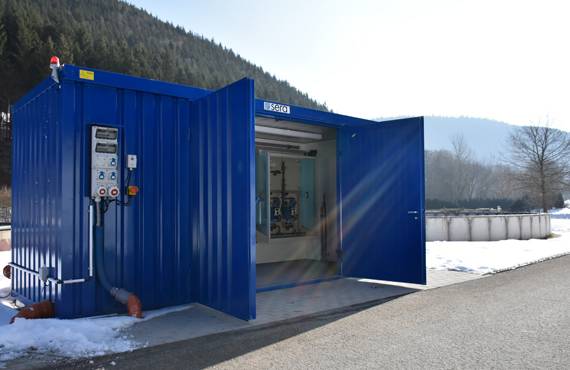Stadtwerke Winterberg
Winterberg, a centre of tourism in the Sauerland region with 13,000 inhabitants in 15 districts, has experienced a development boom in recent years and - from the point of view of tourism - has all the features of a typical destination in the central German uplands.
In order to give winter sports enthusiasts 80 days of guaranteed snow a year, a plan was drawn up in the 1990s to make snow. The scheme worked: in 2012, Winterberg recorded more than 1 million overnight stays for the first time - and that was in commercial hotels alone. Unrecorded stays with small and private accommodation providers and about 1.5 million day visitors a year should be added to this. Of course, this has consequences for the local sewage system. Stadtwerke Winterberg AöR (Winterberg Public Utilities) operates two sewage treatment plants which struggle especially in winter with sudden additional loads because of the increase in tourism. The operator built on our expertise to overcome two particular challenges in this connection:
the large number of day visitors has changed WC usage and the quantity of urea in the sewage has increased significantly. As a result, the amounts of carbon and nitrogen in the sewage are out of proportion. In normal public sewage, the ratio of carbon to nitrogen is 5:1, while in Winterberg it hovers around 2:1. This disproportionate ratio leads to a shortage of carbon in the denitrification period. Acetic acid is added to the sewage as a source of carbon to compensate for this. This supports breakdown of nitrates into elemental nitrogen and the ratio of carbon to nitrogen is restored to the level required.
As a result of weeks of snow melting in Winterberg, the sewage also has very low temperatures, which causes poor settling behaviour of sewage sludge in the secondary clarification process. Addition of polymer flocculating agents improves the bonding and settling behaviour.
sera provided a solution for both challenges: the two sewage treatment plants were each supplied with a complete solution in an insulated hazardous material container with ventilation and heating. A DAV2 dosing system with spray protection doses the acetic acid from a 1,000 litre IBC into the denitrification system. Two iSTEP S50 multiphase motor pumps with a very large adjustment range of 50 ml/h to 50 l/h, supported by a controller, ensure that very large quantities of acetic acid can be added if necessary, but it is also possible to add small quantities of acetic acid continuously in the denitrification process.
Both turn-key containers also have a smart CTD small quantity dosing system to prepare and dose polymer flocculating agents. The polymer is prepared from a concentrate and water, and is added to the feed for the secondary clarification system. The polymer is added automatically, depending on the turbidity in the secondary clarification system. Here, too, we used two iSTEP S50 pumps in order to offset fluctuations as effectively as possible. And this also facilitates easy maintenance and parts supply.
We are delighted that we were able to work with Stadtwerke Winterberg to develop and supply the right solution.


 LinkedIn
LinkedIn Instagram
Instagram